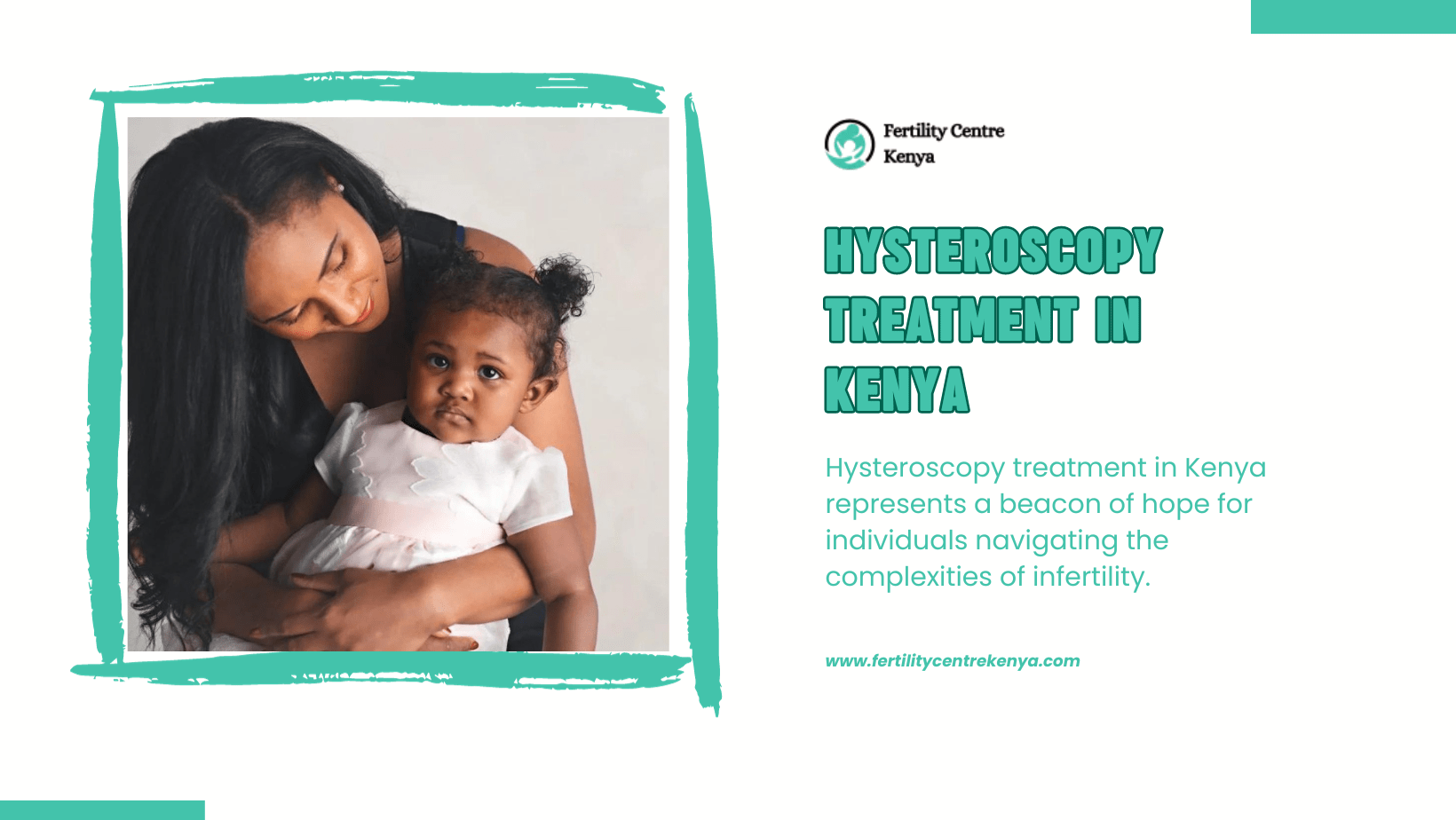
At Fertility Centre Kenya, we understand that the journey to parenthood can be filled with both hope and challenges. We are here to walk with you every step of the way, offering compassionate care and the latest advancements in fertility treatment. Hysteroscopy treatment in Kenya is one of the many ways we help you understand your body better and overcome obstacles that may be standing in the way of your dreams.
This gentle, minimally invasive procedure allows us to closely examine your uterus, identify any underlying issues, and offer solutions that can dramatically improve your chances of conceiving. Whether it’s fibroids, polyps, or uterine abnormalities, our team is committed to providing you with the answers and support you need.
At Fertility Centre Kenya, we believe in giving you more than just medical care – we give you the hope, trust, and personalized attention you deserve on this beautiful journey towards building your family.
To get Hysteroscopy treatment at a lower cost in Kenya:
- Book an appointment with Fertility Centre Kenya
- Call/WhatsApp: +254 100241479
- Email: Info@fertilitycentrekenya.com
- Fertility Centre Kenya IVF Center is a legally Certified ART.
- 95% Highest success rate with Donor assistance.
- All fertility treatments are available under one roof.
Understanding Hysteroscopy
Hysteroscopy is a medical process that includes the insertion of a skinny, lighted tube referred to as a hysteroscope into the uterus through the cervix. This lets doctors visually take a look at the internal of the uterus and diagnose and deal with situations affecting fertility. Unlike traditional surgical methods, hysteroscopy is minimally invasive, decreasing the need for large recovery durations and minimizing the chance of complications.
Why Hysteroscopy?
Hysteroscopy has become a preferred choice for both diagnostic and healing purposes because of its versatility and effectiveness. in the context of fertility treatments, hysteroscopy can be instrumental in identifying and addressing various troubles that can avoid theory, which includes:
Uterine Polyps: Hysteroscopy enables the elimination of uterine polyps, which are growths that could interfere with embryo implantation.
Fibroids: The manner is effective in treating submucosal fibroids, non-cancerous growths in the uterus that may have an effect on fertility.
Uterine Septum: Hysteroscopy helps correct a uterine septum, a congenital condition where a band of tissue divides the uterus.
Asherman’s Syndrome: Scar tissue within the uterus, known as Asherman’s syndrome, can be diagnosed and treated using hysteroscopy.
Evaluation of Uterine Anomalies: Hysteroscopy allows for a detailed assessment of the uterus, assisting inside the identity of structural abnormalities that can effect fertility.
z

The Hysteroscopy Procedure:
Understanding the hysteroscopy technique is critical for people thinking about fertility treatments. The interaction commonly includes the following key stages:
Preparation: Before the strategy, patients might go through a careful assessment, including imaging review and research facility tests, to evaluate their general well-being and recognize any likely dangers.
Anesthesia: Hysteroscopy is often performed under neighborhood or general sedation, contingent upon the particular case and patient inclination.
Insertion of Hysteroscope: The hysteroscope is gently inserted through the cervix into the uterus, allowing the doctor to visualize the uterine cavity.
Diagnosis: The hysteroscope’s camera gives continuous pictures of the uterine inside, assisting the specialist with diagnosing any anomalies or conditions influencing fertility.
Treatment: In the event that an issue is recognized, restorative mediations, for example, the expulsion of polyps or fibroids can be performed during a similar technique.
Recovery: As hysteroscopy is minimally invasive, recovery time is generally shorter compared to traditional surgical methods. Most patients can resume normal activities within a few days.
Benefits of Hysteroscopy Treatment in Kenya
Deciding on hysteroscopy treatment in Kenya offers a few benefits, adding to the rising fame of the technique:
Expertise of Fertility Specialists: Fertility centers in Kenya are set up with experienced and exceptionally prepared fruitfulness experts who have some expertise in conceptive medication.
Cutting-Edge Technology: These focuses are furnished with the most recent clinical innovations, guaranteeing that patients get the most developed and successful medicines.
Cost-Effective Options: Fertility treatments in Kenya are often more cost-effective compared to many Western countries, making them accessible to a broader range of individuals.
Holistic Patient Care: Fertility centers in Kenya prioritize holistic patient care, considering not only the physical but also the emotional and psychological aspects of fertility challenges.
High Success Rates: The expertise of fertility specialists, coupled with advanced technology, contributes to high success rates in fertility treatments, including hysteroscopy.

Conclusion
In conclusion, Hysteroscopy treatment in Kenya stands as a pivotal force in the journey toward overcoming fertility challenges. The state-of-the-art facilities and expertise offered by Kenya’s fertility centers underscore a commitment to providing accessible, advanced, and personalized reproductive healthcare. As people and couples leave on the way to life as a parent, Hysteroscopy arises as an encouraging sign, empowering both determination and designated mediation for a scope of uterine circumstances.
With a comprehensive way to deal with patient consideration and an emphasis on state-of-the-art innovation, these ripeness places address physiological obstructions as well as perceive and support the emotional and psychological aspects of the fertility journey. The landscape of reproductive medicine in Kenya continues to evolve, promising a future where the dreams of building families are not only realized but embraced with compassion, expertise, and unwavering dedication.
Read Also:



